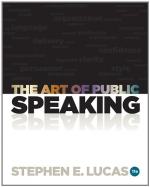10. Give a number of quotations, suitable for a speaker’s use, that you have memorized in off moments.
11. In the manner of the outline on page 213, analyze the address on pages 78-79, “The History of Liberty.”
12. Give an outline analysis, from notes or memory, of an address or sermon to which you have listened for this purpose.
13. Criticise the address from a structural point of view.
14. Invent titles for any five of the themes in Exercise 5.
15. Criticise the titles of any five chapters of this book, suggesting better ones.
16. Criticise the title of any lecture or address of which you know.
FOOTNOTES:
[Footnote 10: How to Attract and Hold an Audience, J. Berg Esenwein.]
[Footnote 11: Adapted from Competition-Rhetoric, Scott and Denny, p. 241.]
CHAPTER XIX
INFLUENCING BY EXPOSITION
Speak not at all, in any wise,
till you have somewhat to speak;
care not for the reward of
your speaking, but simply and with
undivided mind for the truth
of your speaking.
—THOMAS CARLYLE, Essay on Biography.
A complete discussion of the rhetorical structure of public speeches requires a fuller treatise than can be undertaken in a work of this nature, yet in this chapter, and in the succeeding ones on “Description,” “Narration,” “Argument,” and “Pleading,” the underlying principles are given and explained as fully as need be for a working knowledge, and adequate book references are given for those who would perfect themselves in rhetorical art.
The Nature of Exposition
In the word “expose”—to lay bare, to uncover, to show the true inwardness of—we see the foundation-idea of “Exposition.” It is the clear and precise setting forth of what the subject really is—it is explanation.
Exposition does not draw a picture, for that would be description. To tell in exact terms what the automobile is, to name its characteristic parts and explain their workings, would be exposition; so would an explanation of the nature of “fear.” But to create a mental image of a particular automobile, with its glistening body, graceful lines, and great speed, would be description; and so would a picturing of fear acting on the emotions of a child at night. Exposition and description often intermingle and overlap, but fundamentally they are distinct. Their differences will be touched upon again in the chapter on “Description.”
Exposition furthermore does not include an account of how events happened—that is narration. When Peary lectured on his polar discoveries he explained the instruments used for determining latitude and longitude—that was exposition. In picturing his equipment he used description. In telling of his adventures day by day he employed narration. In supporting some of his contentions he used argument. Yet he mingled all these forms throughout the lecture.




